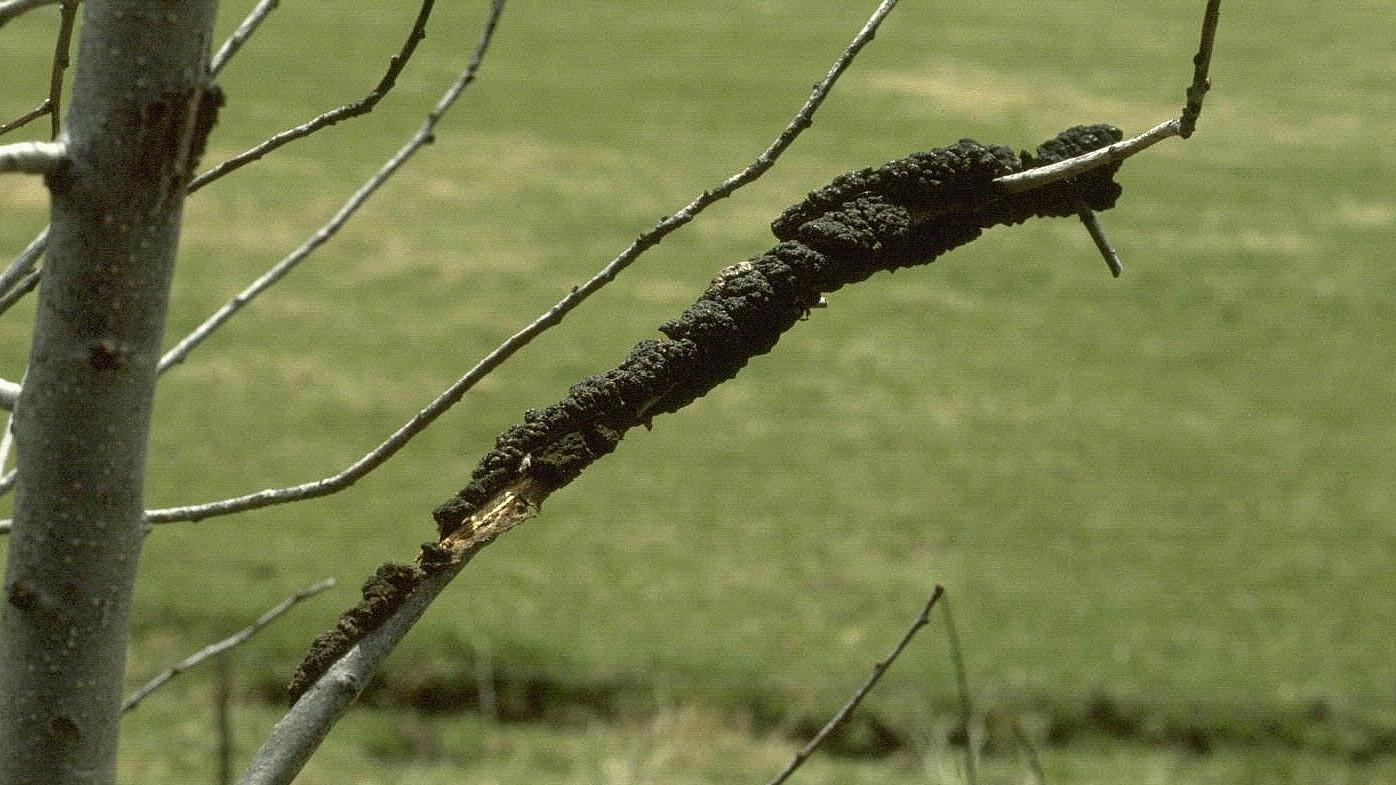Key points
- Black knot, caused by the fungus Apiosporina morbosa, forms galls on plants in the genus Prunus, including plum, cherry, flowering almond, apricot, and blackthorn.
- The first symptoms appear in the fall as swellings on twigs.
- The swellings enlarge the next season, gradually encircle the stem, and form black galls.
- The surface typically splits or cracks, giving a roughened or crusty appearance.
- The stem beyond the gall typically dies back and fails to leaf out.

Black knot on cherry tree branch. Photo: David L. Clement, University of Maryland
Management
- Chemical controls are not effective.
- Prune out infected stems and branches at least 4 inches below the galls and remove the clippings from the landscape before April 1.
- Infected wild plum and black cherry are often a source of new infections.
